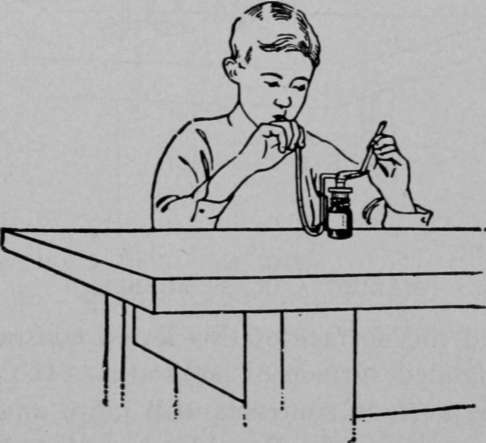Experiment 5. To Close The End Of A Small Tube
Description
This section is from the book "Experimental Glass Blowing For Boys", by Carleton J. Lynde. Also available from Amazon: Experimental Glass Blowing for Boys.
Experiment 5. To Close The End Of A Small Tube
Hold one end of a piece of No. 2 tube in the blowpipe flame (Fig. 10), turn it slowly, and heat until the end closes. Does it close nicely?
Close one end of a piece of No. 4 in the same way.
You can close No. 6 tubing in this way, but it leaves a large lump of glass which may crack on cooling or on reheating. You will practice closing No. 6 tubing later.

Closing One End Of A Tube
The glass becomes soft when heated because it becomes almost a liquid, and if it is heated sufficiently it becomes entirely a liquid. In this respect it acts very much as pitch, rosin, and wax act when heated by the sun or by a fire.
The end of a glass tube becomes smooth, or closes entirely, when heated, for the following reason: The surface of any liquid tries to take the smallest possible area (this is explained in detail under "Surface Tension" in the Gilbert book on "Experimental Mechanics"), for example, a small particle of water takes the shape of a drop, a sphere, and the surface of a sphere has the least area for a given amount of water. Now when the end of the glass tube is heated it becomes a liquid, and the surface of this liquid contracts the glass into a smooth rounded surface of least area. If the tube is heated still more, the surface contracts still more and closes the end.
Continue to:
- prev: Experiment 4. Practice With The Blowpipe
- Table of Contents
- next: Experiment 6. Fun Blowing Glass Bubbles
